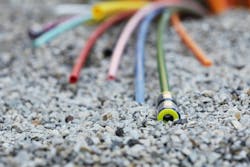The Fiber Broadband Association Announces Annual Fiber Deployment Cost Report
The Fiber Broadband Association recently released the results of its Fiber Deployment Cost Annual Report. The study is conducted by Cartesian and looks ay the changing costs of fiber broadband deployment. The study found that broadband service providers are anticipating future costs to be roughly the same as 2024 or grow slightly (less than 16%). This is considered “a marked improvement” from last year’s study. “The year-over-year network median costs for underground deployment increased 12% year-over-year but the median cost for aerial fiber deployment remained largely the same.” The report also noted how cost trends effect the growth of fiber networks, giving insight for policymakers and industry leaders who are figuring out the financial landscape of broadband infrastructure.
“Fiber remains the leading preference by states for telecommunications investments across the country due to its reliability, low-latency, and scalability. Studying the cost of fiber deployment over time is critical to our understanding of the value of our investments in broadband,” said Deborah Kish, Vice President of Research and Workforce Development for the Fiber Broadband Association. “This cost report serves as a benchmark for the industry and for policymakers to chart an affordable path to deploying reliable, long-lasting fiber networks that reach the greatest number of Americans.”
Per the report, increasing labor and material costs have contributed to the rise of deployment costs in 2024, with labor alone accounting for 60-80% of deployment costs. It is important to note that the deployment costs differed based on the construction technique used, with plowing for underground builds having the lowest media cost and trenching having the highest. In regards to aerial deployments, the report showed similar costs for both Strand and Lash and ADSS cabling methods.
“New federal and state funding, such as Texas’ $700 million BOOT program, will start to flow through to providers this year, and more rural areas will gain access to fiber. Together with investment from private capital, we expect 2025 to be another record deployment year for fiber despite rising costs across the broadband industry,” said Michael Dargue, Vice President at Cartesian.
